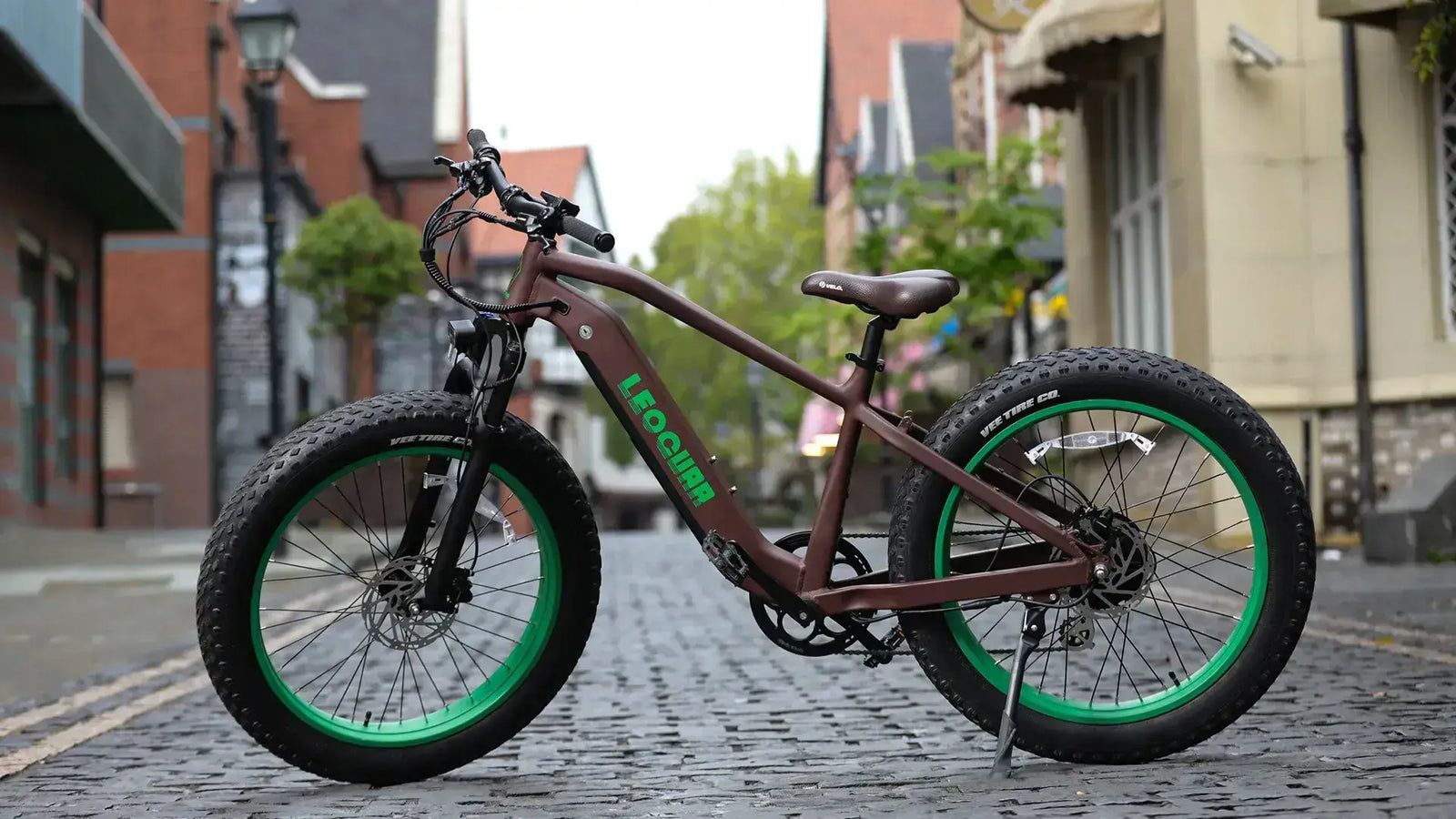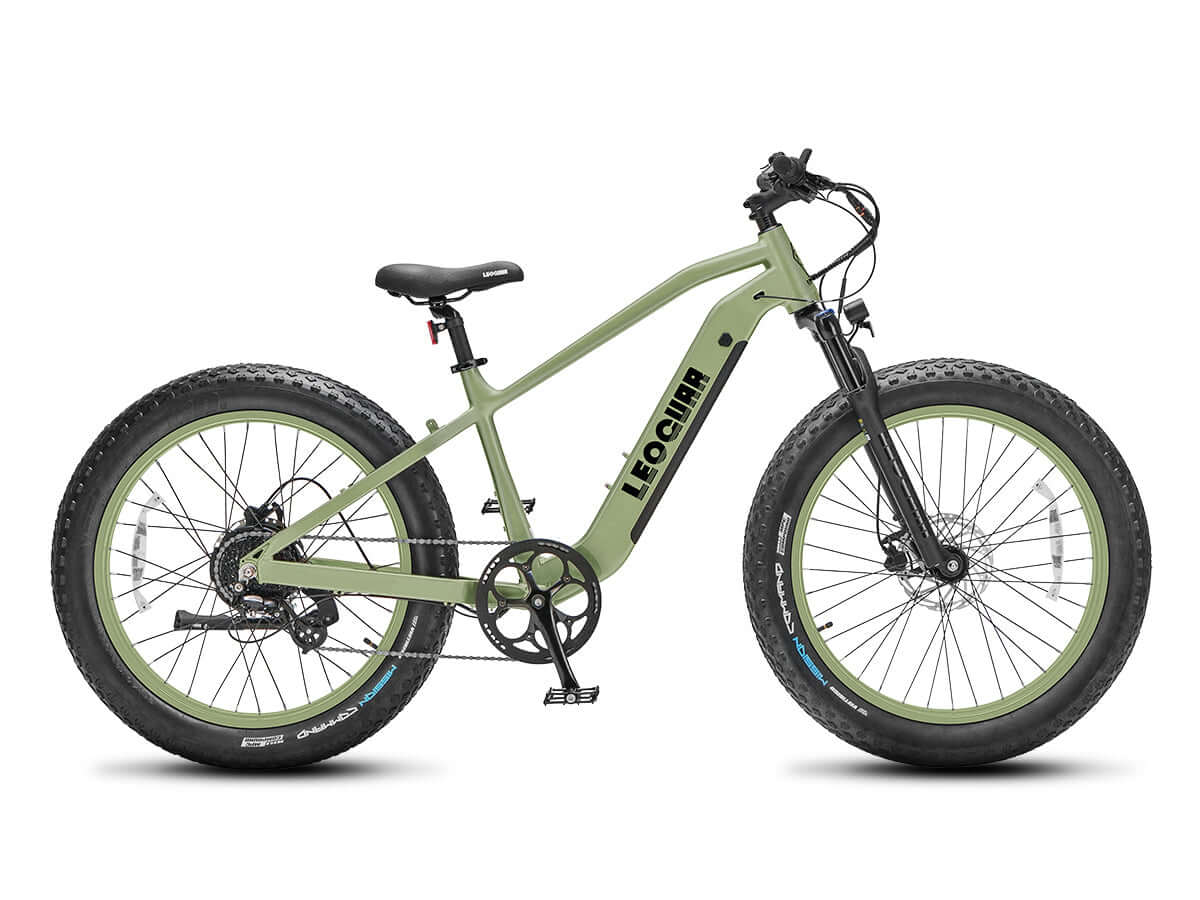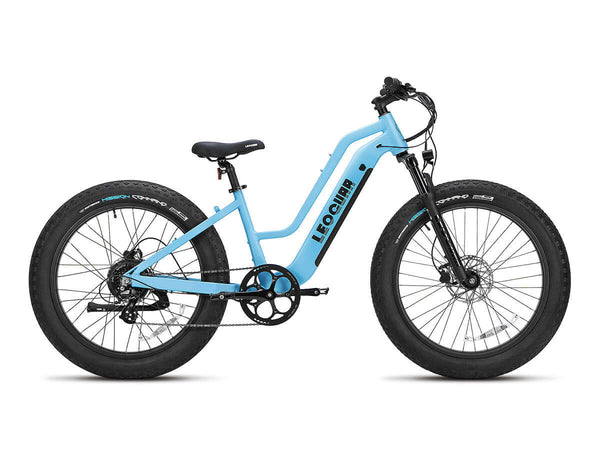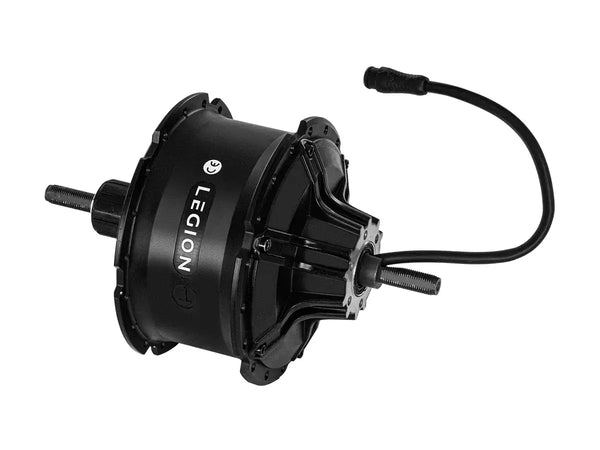
Fastest Electric Bikes for Adults You Can Actually Afford Under $2000
The Thrill of Realistic Speed
The appeal of a fast electric bike is undeniable. It's the feeling of the wind, the smooth acceleration, and the ability to shrink your commute or conquer hills with ease. But a quick search often shows bikes with motorcycle-level speeds and equally shocking price tags. This leads to the real question: can you get a genuinely fast electric bike for adults for under $2000? The answer is a strong yes, but it's important to understand what "fast" means in this affordable price range.
This guide is built for the value-conscious rider. We will cut through the marketing hype to give you a clear roadmap. We'll start by explaining the legal e-bike speed classes, then provide a detailed buyer's checklist of the features that truly matter for performance. Finally, we'll recommend our top picks for 2025 and share expert tips for maximizing your speed safely and realistically.
Understanding E-Bike Speed Classes
Before you can find the fastest electric bike, you need to understand the legal framework that governs their speed. In the United States, e-bikes are typically organized into a three-class system. This classification is the single most important factor determining a bike's legal top assisted speed. Knowing these classes empowers you to read specifications like a pro and choose a bike that is legal for your local paths and roads.
According to advocacy group's guide to e-bike laws and classifications, the system is designed to balance performance with public safety.
- Class 1: The motor provides assistance only when you are pedaling and stops assisting at 20 mph. These are the most widely accepted e-bikes on multi-use paths.
- Class 2: The motor can be activated by a throttle, meaning you don't have to pedal. Like Class 1, the motor assistance cuts out at 20 mph. These are great for relaxed cruising.
- Class 3: This is the category most associated with the fastest electric bikes that are widely street-legal. The motor provides pedal-assist up to 28 mph. Most Class 3 e-bikes do not have a throttle that works above 20 mph, though some models offer it.
For this guide's focus on affordable speed, we are primarily looking at Class 3 e-bikes that can legally reach 28 mph and powerful Class 2 models that offer quick acceleration up to their 20 mph limit. Always check your state and local regulations, as rules can vary.
Your Buyer's Checklist
Finding a fast, reliable e-bike under $2000 requires looking past the top speed number and examining the components that create that performance. Use this expert checklist to evaluate potential models and identify true value.
Motor Power: Watts vs. Torque
While many brands advertise high wattage, the numbers can be misleading. You'll commonly see 750W motors in this category, which is an excellent benchmark for strong performance. It's important to know the difference between nominal power (the motor's continuous output) and peak power (its maximum output in short bursts).
However, the more telling metric for real-world feel is Torque, measured in Newton-meters (Nm). Torque is the rotational force that gets you moving from a standstill and powers you up hills. A bike with 80 Nm of torque will feel significantly "punchier" and accelerate faster than a bike with 50 Nm, even if both have 750W motors. For a fast-feeling bike, look for 65 Nm or higher.
Battery Life: The Fuel Tank
Speed consumes energy. A powerful motor running at 28 mph will drain a battery much faster than one cruising at 15 mph. To ensure you have enough range to enjoy that speed, pay close attention to the ebike battery capacity. This is measured in Amp-hours (Ah) and Volts (V). A simple way to compare is by looking at the Watt-hours (Wh), which is calculated by multiplying Volts and Amp-hours (e.g., 48V x 15Ah = 720Wh).
For a fast bike, a battery of 650Wh or more is recommended. Also, check if the manufacturer mentions the brand of the battery cells. The presence of reputable names like Samsung, LG, or Panasonic is a strong indicator of quality, reliability, and longevity.
Brakes: Your Top Safety Feature
Going fast is only fun if you can stop safely. At 28 mph, you cover ground quickly, and your ability to stop on a dime is non-negotiable. For this reason, we strongly recommend hydraulic disc brakes over their mechanical counterparts.
Mechanical disc brakes use a steel cable to pull the brake caliper, similar to a traditional bicycle. They work, but can feel spongy and require more hand strength. Hydraulic disc brakes use fluid in a sealed line to transfer force, providing significantly more stopping power with less effort. The feel is smoother, more responsive, and far more confidence-inspiring when you need to slow down quickly.
Frame, Suspension, and Tires
A stable ride at speed is built on a solid foundation. A flimsy frame will feel twitchy and unsafe at 28 mph. Look for bikes with robust aluminum frames.
A front suspension fork is also crucial. It absorbs bumps and imperfections in the road, keeping your front wheel planted and preventing jarring vibrations from reaching your handlebars. This dramatically improves both comfort and control.
Finally, consider the tires. Wider tires, often called fat tires (4 inches wide) or "plus" tires (around 3 inches wide), provide a larger contact patch with the ground. This increases stability and grip, making the bike feel much more planted and secure at higher speeds, especially on less-than-perfect pavement.
Our Picks for 2025
After evaluating dozens of models based on our checklist, we've curated a list of the fastest electric bikes that deliver exceptional performance without exceeding a $2000 budget. These bikes offer the best combination of speed, power, and quality components in their class.
| Model Name | Top Speed (Class) | Motor (Nominal/Torque) | Price (Approx.) | Best For |
|---|---|---|---|---|
| Leoguar Fastron | 28 mph (Class 3) | 750W / 80 Nm | $1,799 | Power & All-Terrain |
| Aventon Pace 500.3 | 28 mph (Class 3) | 500W / 63 Nm | $1,699 | Agile Commuting |
| Ride1Up 700 Series | 28 mph (Class 3) | 750W / 60 Nm | $1,595 | All-Around Value |
| Lectric XP 3.0 | 28 mph (Class 3) | 500W (1000W Peak) | $999 | Budget & Portability |
Leoguar Fastron
If you're looking for raw torque, dependable off-road control, and surprising comfort, the Fastron delivers in spades. Designed in the USA and UL-certified, this bike is built to conquer wild terrain and daily commutes alike—with confidence.
- Pros: 80 Nm of torque from a 750W motor, hydraulic disc brakes, full 8-speed gearing, and 26"x4.0" fat tires for all-terrain grip.
- Cons: Slightly heavier build at 70 lbs (with battery), but the power makes up for it.
- Our Experience: The Fastron feels unstoppable. The torque kicks in smoothly but firmly, especially when climbing hills or riding on dirt trails. Its wide tires and suspension fork absorb bumps with ease, while the leather saddle and upright geometry make longer rides surprisingly comfortable. Add in smart security features like password-protected display and CANbus integration, and this is a serious machine at a sub-$2,000 price point.
Aventon Pace 500.3
The Pace 500.3 is a masterclass in balanced design. It feels more like a nimble bicycle than a heavy e-bike, making it a joy to ride in urban environments.
- Pros: Responsive torque sensor for smooth power delivery, integrated lights, lightweight feel.
- Cons: 500W motor is less powerful on steep hills compared to 750W competitors.
- Our Experience: During testing, the torque sensor was the standout feature. Power application feels natural and intuitive, instantly matching your pedaling effort. It's a refined ride that makes it one of the best choices for commuters who value agility.
Ride1Up 700 Series
This bike consistently punches above its price tag, offering a feature set typically found on models costing hundreds more. It's a true do-it-all commuter.
- Pros: Powerful 750W motor, included hydraulic brakes, fenders, and rear rack.
- Cons: Cadence sensor is less refined than a torque sensor, can feel a bit jerky on takeoff.
- Our Experience: The 750W motor delivers a satisfying kick, getting you up to the 28 mph limit quickly on flat roads. We found the hydraulic brakes to be responsive and confidence-inspiring during our test rides. For the price, the complete package is nearly impossible to beat. Some models in this category are also recognized by major publications like Bicycling's e-bike tests for their outstanding value.
Lectric XP 3.0
The Lectric XP 3.0 proves that a low price doesn't have to mean slow speeds. This folding fat-tire bike is a powerhouse that offers incredible versatility.
- Pros: Unbeatable price, folding frame for easy storage, surprisingly powerful peak motor output.
- Cons: Heavier than non-folding bikes, smaller 20-inch wheels can feel less stable at top speed.
- Our Experience: Don't let the small frame fool you. Unlocking it to Class 3, the bike feels surprisingly quick. The 1000W peak power provides brisk acceleration. It's the perfect choice for RV owners, apartment dwellers, or anyone needing a fast, compact e-bike on a tight budget.
Real-World Performance Tips
An e-bike's spec sheet tells only half the story. The advertised top speed of 28 mph is typically achieved under ideal conditions: a lightweight rider on a perfectly flat road with no wind. Here are the real-world factors that will impact your actual speed.
- Rider Weight and Cargo: More weight requires more energy from the motor to maintain speed. A 220-pound rider will have a slightly lower top speed than a 150-pound rider on the same bike.
- Terrain: This is the biggest factor. A 5% grade will significantly slow you down, and you may not be able to hold 28 mph without intense pedaling.
- Tire Pressure: Under-inflated tires create more rolling resistance, scrubbing off speed and draining your battery faster. Keep your tires inflated to the recommended PSI.
- Wind Resistance: A strong headwind is like riding up a constant hill. On a recent ride with a 15 mph headwind, we noticed our top speed was closer to 24 mph instead of the usual 28 mph, which is a perfect example of real-world conditions at play.
- Battery Level: On some models, you may notice a slight drop in peak performance when the battery falls below 25%.
Disclaimer: We do not advise, condone, or explain how to illegally modify an e-bike's speed limiter. Bypassing these factory-set limits is often illegal, voids your warranty, and can create a significant safety risk for you and others.

Ride Fast, Ride Smart
Finding a fast electric bike for adults under $2000 is not just possible; it's a fantastic way to add speed and excitement to your daily travel. By focusing on Class 3 models, you can achieve a street-legal top speed of 28 mph that will transform your commute.
Remember to prioritize the components that deliver that speed safely: a powerful motor with high torque (at least 750W and 65Nm), responsive hydraulic disc brakes, and a stable frame with a suspension fork. The models we've highlighted represent the best value in this category, but armed with this knowledge, you can confidently evaluate any e-bike. Go enjoy the ride, and remember to balance the thrill of speed with safe, responsible riding.
Frequently Asked Questions
1. Q: What is the fastest legal speed for an electric bike in the US?
A: The fastest legal speed for electric bikes in most US states is 28 mph, which applies to Class 3 e-bikes. These bikes provide pedal-assist up to this speed limit and are generally allowed on roads and bike lanes.
2. Q: Can I get a quality fast electric bike for under $1500?
A: Yes, you can find quality fast electric bikes under $1500. The Ride1Up 700 Series at $1,595 and the Lectric XP 3.0 at $999 are excellent examples that offer 28 mph speeds without compromising on essential features.
3. Q: What's more important for speed: motor wattage or torque?
A: While both matter, torque is more important for real-world speed performance. Torque determines how quickly you accelerate and how well you maintain speed on hills. Look for at least 65 Nm of torque for a truly fast-feeling ride.
4. Q: Do I need hydraulic brakes on a fast electric bike?
A: Yes, hydraulic disc brakes are strongly recommended for fast electric bikes. At speeds up to 28 mph, you need reliable stopping power, and hydraulic brakes provide much better performance and control than mechanical disc brakes.
5. Q: How does rider weight affect the top speed of an electric bike?
A: Rider weight significantly impacts top speed and acceleration. Heavier riders will experience slightly lower top speeds and slower acceleration. Most manufacturers base their speed claims on a 150-180 pound rider under ideal conditions.











































Leave a comment